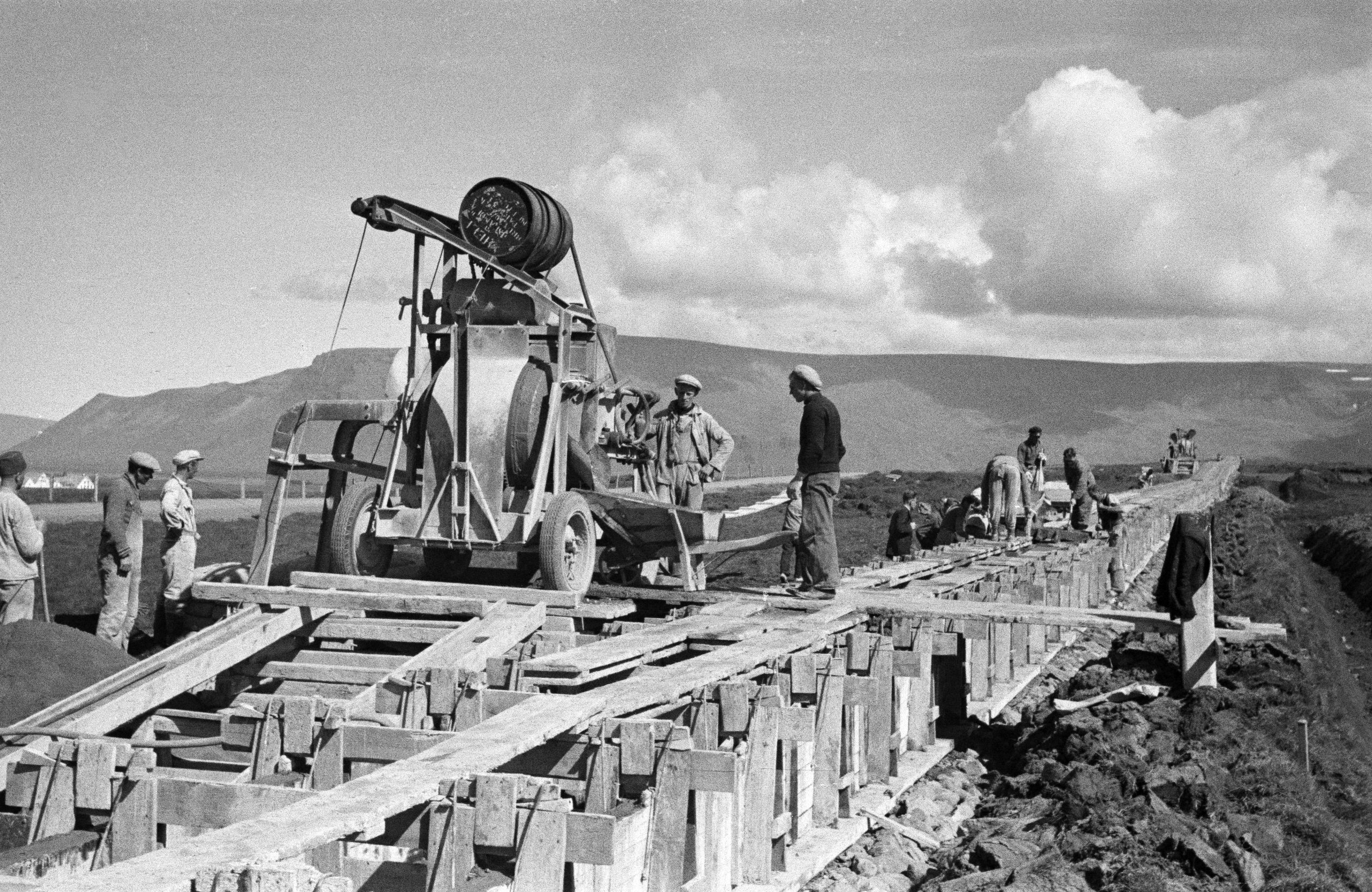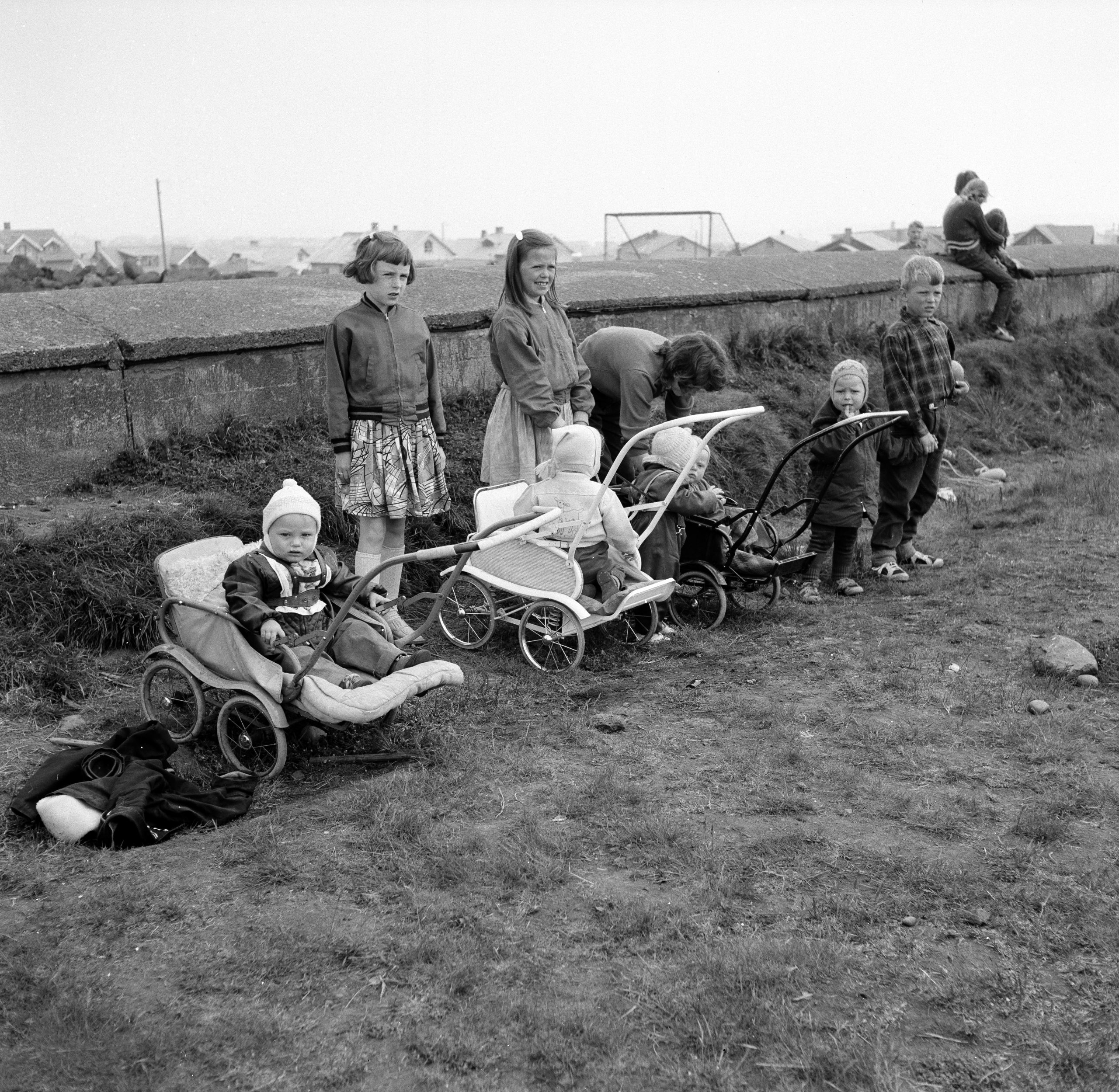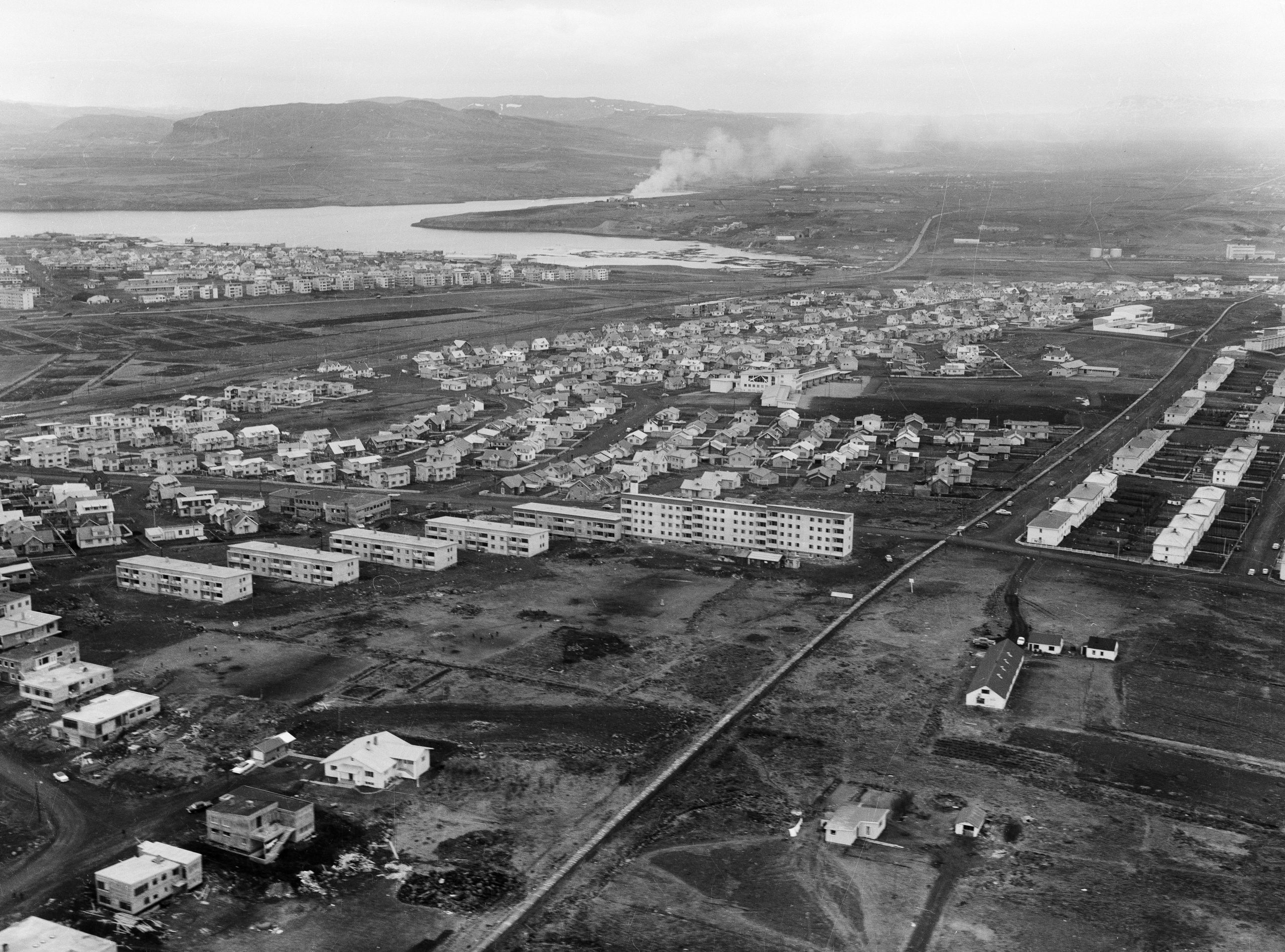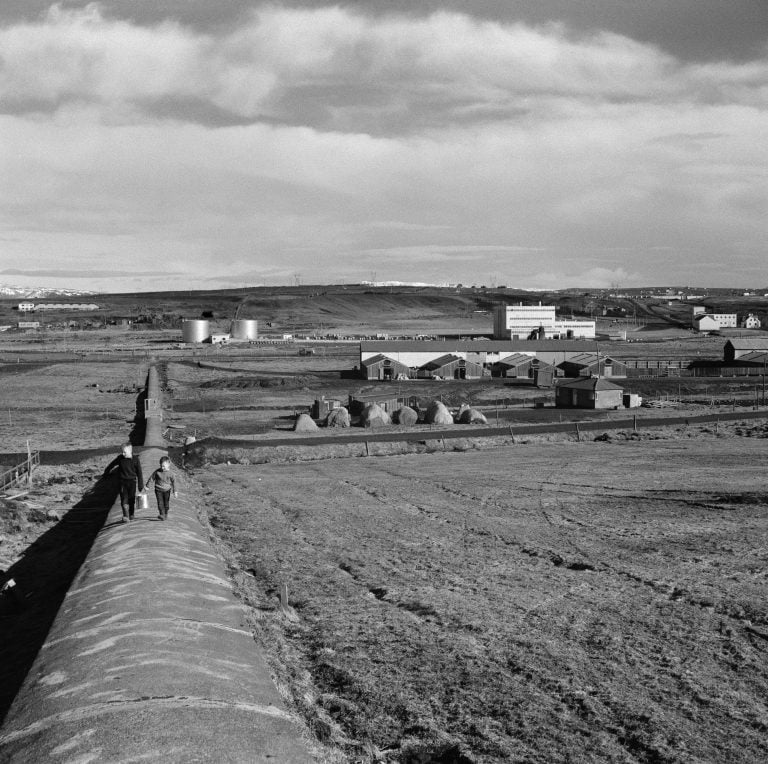
Workers casting a concrete hot-water conduit near the Úlfarsá river in the eastern outskirts of Reykjavík, 1942- 43. A concrete mixer is running and a man is waiting with a wheelbarrow. Mt. Esja in the backround.
Photographer: Helgi SigurðssonConcrete conduits can be seen in various neighbourhoods of the city have an important place in the lives of the people of Reykjavík. Inside them are pipes which transport geothermal water for heating. They also serve as footpaths for the people in the area, especially in winter, because when all surfaces around them are icy, the conduits stay unfrozen because of the heat of the water inside. Before natural hot water was used for heating, coal was the main source of heating in Reykjavík, as in most of Europe. Due to the cool climate, Reykjavík people burned a lot of coal, and a thick layer of coal smoke often lay over the town. Coal had to be imported from abroad; it was not only an expensive fuel, but also a pollutant.

Photographer: Gunnar Rúnar Ólafsson.
The Reykjavík district heating utility, now Reykjavík Energy, was founded in 1930. Initially water was piped from the hot springs in Laugardalur, Reykjavík. This worked well, but there was only enough water for a small part of the town, and those that did not benefit from this were eager to connect to the new heating system. In order to meet demand, hot water had to be piped in from outside Reykjavík; in 1943 hot-water pipes were laid from Reykir in Mosfellssveit. One of the longest hot-water pipes in the world at that time was laid over a distance of 17 kilometres across hills and heathland, streams and rivers, all the way from Reykir to Öskjuhlíð in Reykjavík, where the geothermal water was stored in gigantic tanks for distribution around the town. The pipes were laid in concrete conduits, which were built on site. Inside the conduit, the pipe was insulated with turf and volcanic pumice. The Reykjavík area district heating utility is one of the biggest of its kind in the world. It has been beneficial in many ways: it had health benefits for the people of Reykjavík, the coal dust disappeared, and the costs of running a home or business were reduced. General hygiene improved, as bathing and washing became less expensive and more accessible.

Photographer: Pétur Thomsen
Historical markers in Reykjavík
In recent years the City of Reykjavík has been installing historical markers around the city. Such markers at historic sites and areas within Reykjavík enrich the experience of both residents and visitors, and provide information on the city‘s culture and history. The markers display information about history, art, literature and social life relating to the site in question, accompanied by pictures.
Text and photos: Reykjavík City Museum
See further at www.reykjavikcitymuseum.is


